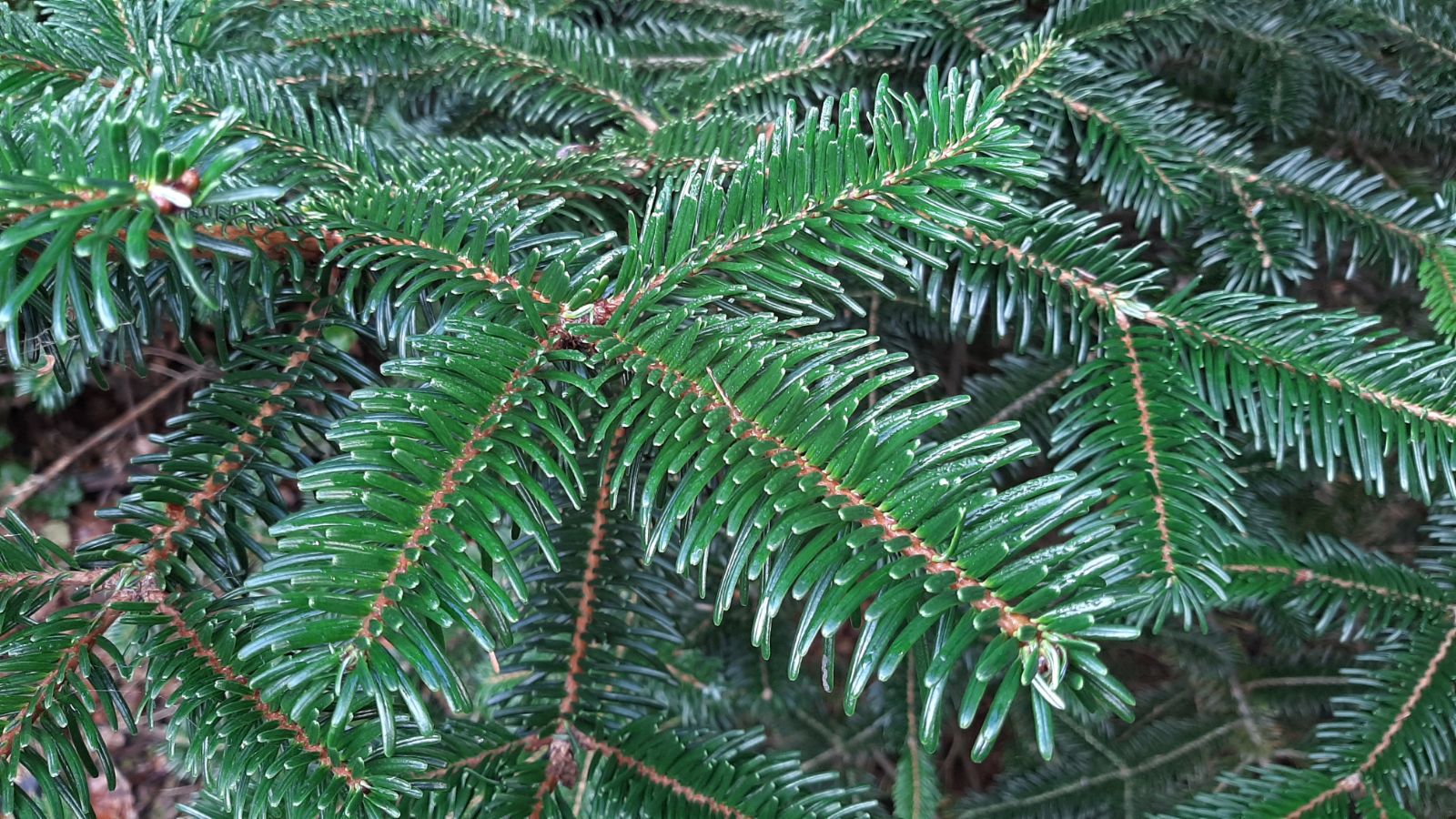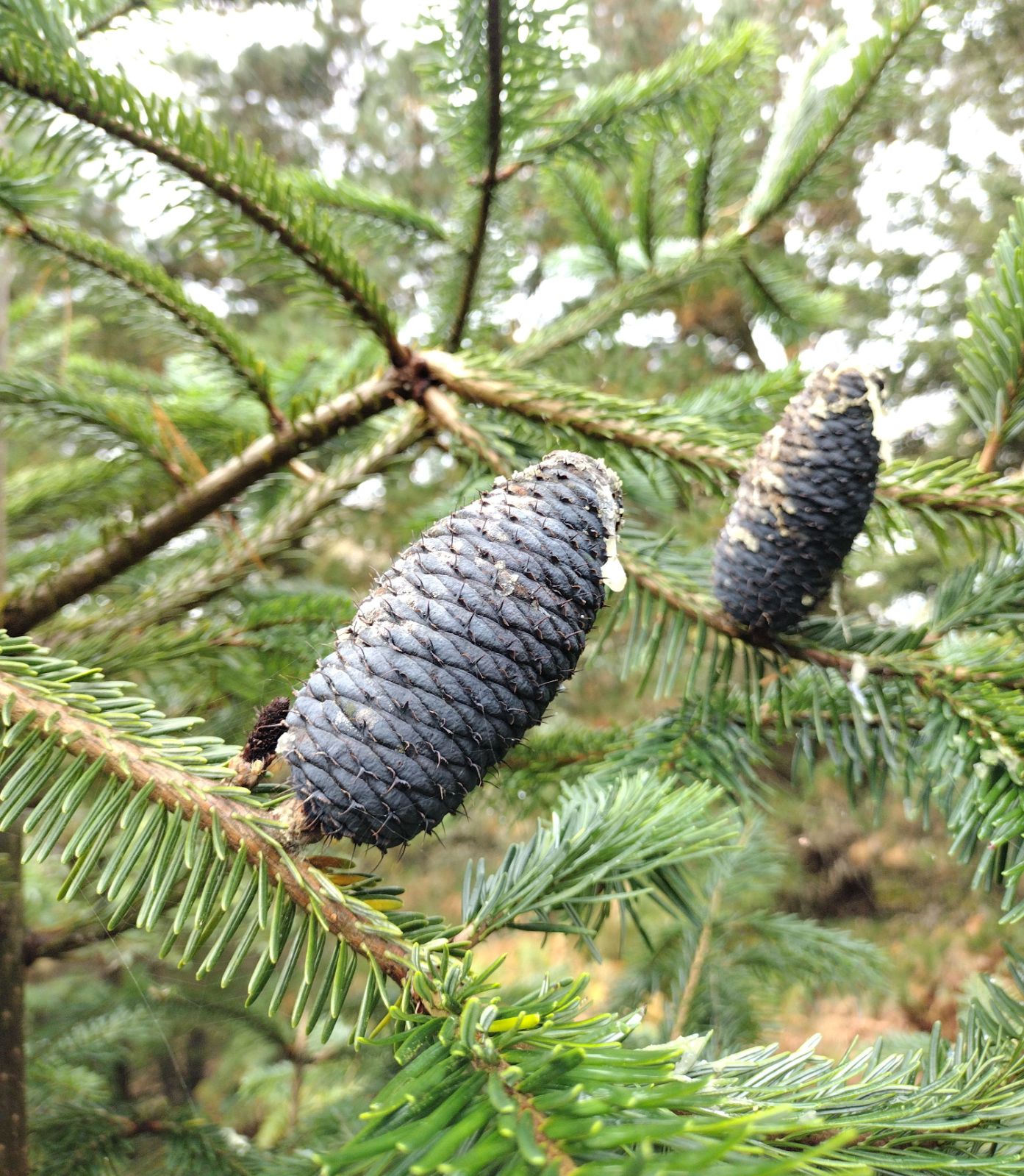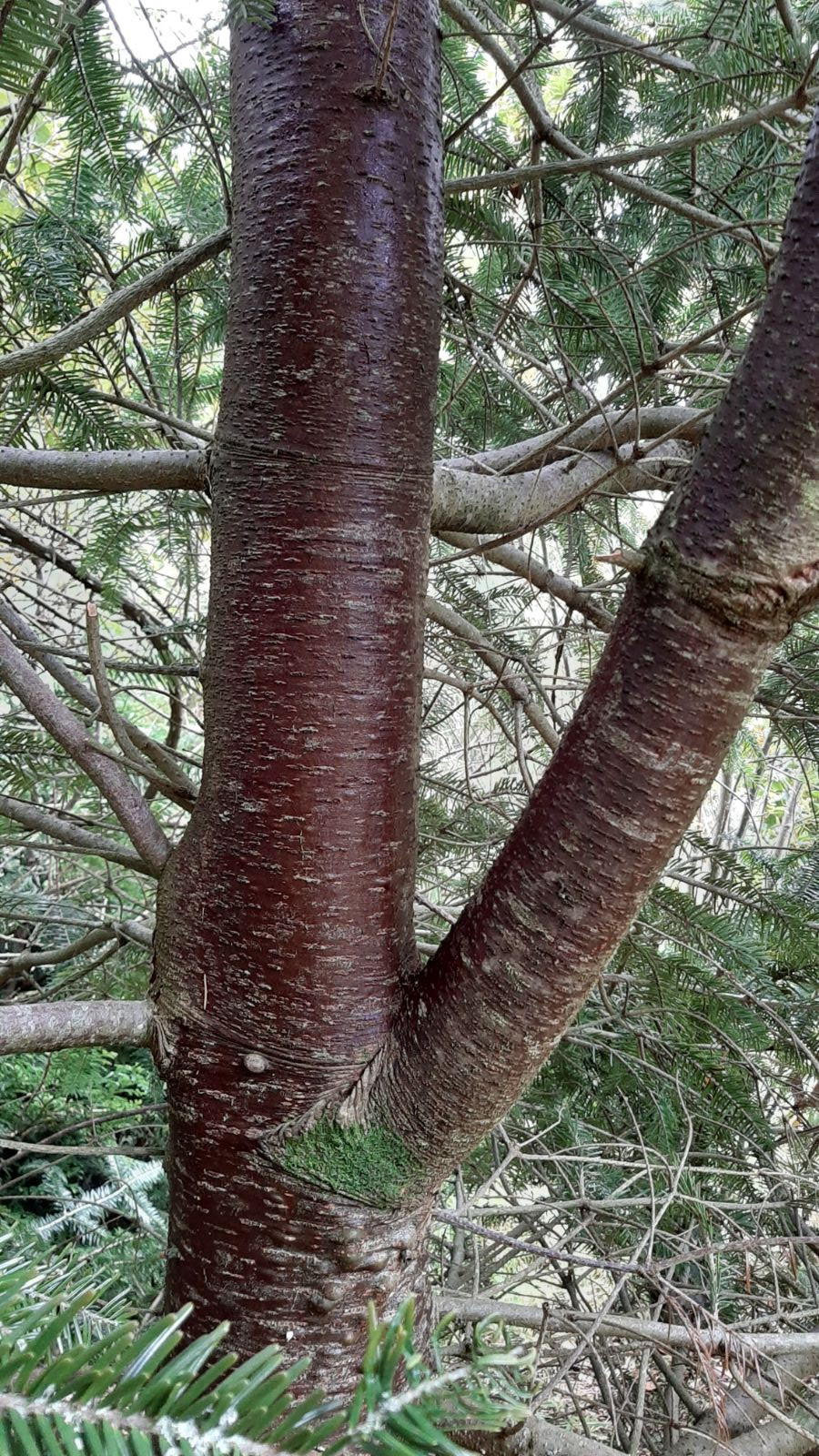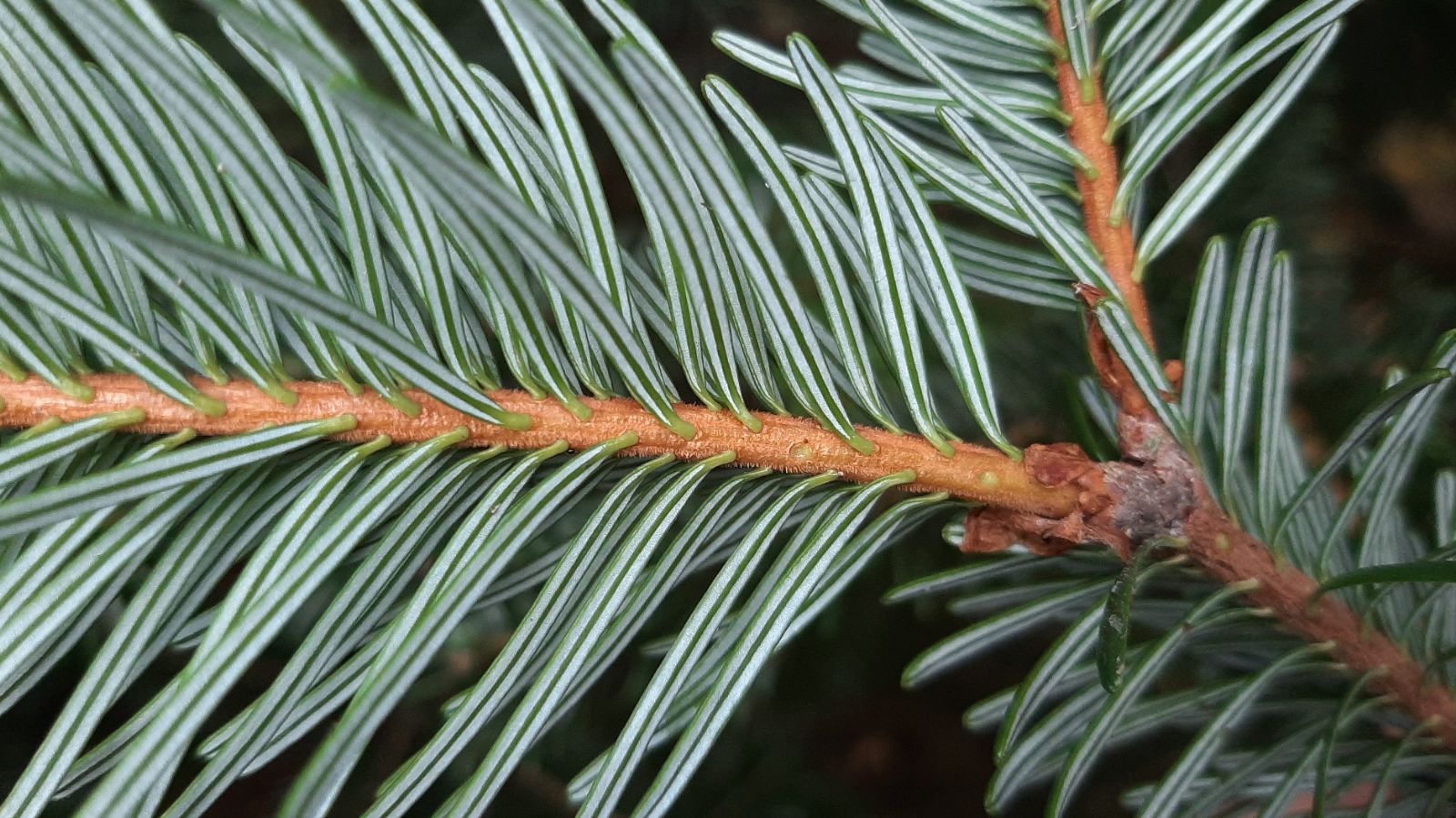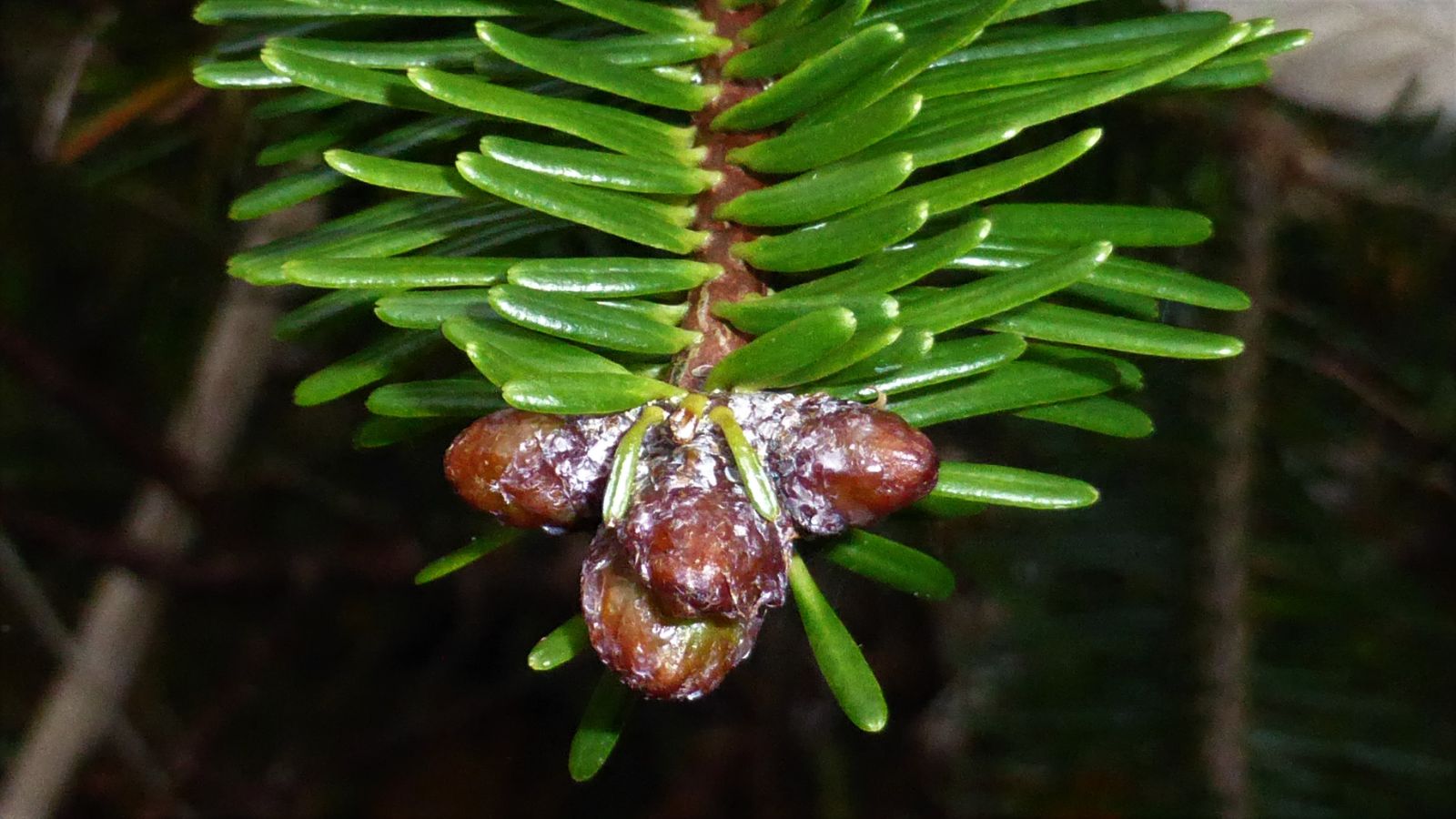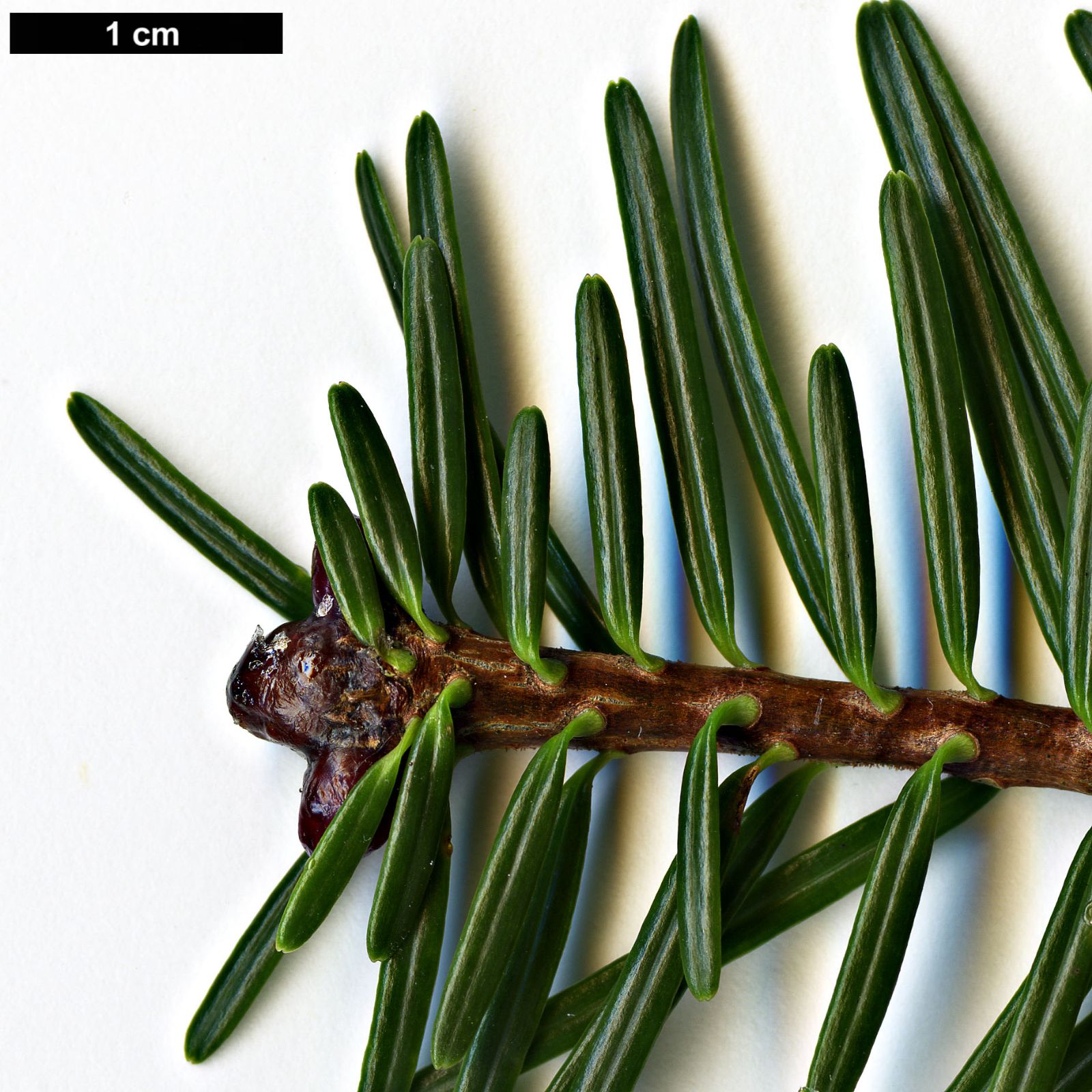Abies fordei
Sponsor
Kindly sponsored by
Sir Henry Angest
Credits
Tom Christian (2021)
Recommended citation
Christian, T. (2021), 'Abies fordei' from the website Trees and Shrubs Online (treesandshrubsonline.
Other taxa in genus
- Abies alba
- Abies amabilis
- Abies × arnoldiana
- Abies balsamea
- Abies beshanzuensis
- Abies borisii-regis
- Abies bracteata
- Abies cephalonica
- Abies × chengii
- Abies chensiensis
- Abies cilicica
- Abies colimensis
- Abies concolor
- Abies delavayi
- Abies densa
- Abies durangensis
- Abies ernestii
- Abies fabri
- Abies fanjingshanensis
- Abies fansipanensis
- Abies fargesii
- Abies ferreana
- Abies firma
- Abies flinckii
- Abies forrestii
- Abies forrestii agg. × homolepis
- Abies fraseri
- Abies gamblei
- Abies georgei
- Abies gracilis
- Abies grandis
- Abies guatemalensis
- Abies hickelii
- Abies holophylla
- Abies homolepis
- Abies in Mexico and Mesoamerica
- Abies in the Sino-Himalaya
- Abies × insignis
- Abies kawakamii
- Abies koreana
- Abies koreana Hybrids
- Abies lasiocarpa
- Abies magnifica
- Abies mariesii
- Abies nebrodensis
- Abies nephrolepis
- Abies nordmanniana
- Abies nukiangensis
- Abies numidica
- Abies pindrow
- Abies pinsapo
- Abies procera
- Abies recurvata
- Abies religiosa
- Abies sachalinensis
- Abies salouenensis
- Abies sibirica
- Abies spectabilis
- Abies squamata
- Abies × umbellata
- Abies veitchii
- Abies vejarii
- Abies × vilmorinii
- Abies yuanbaoshanensis
- Abies ziyuanensis
Trees 20–40 m × <1.2 m dbh. Crown pyramidal. Bark of young trees grey or reddish-brown, smooth, lenticillate, later breaking into thin, irregular scaly plates. First order branches spreading horizontally; second order branches horizontal or assurgent. Branchlets stout, assurgent, shining reddish-brown or fawn or dull-brown at first, later pale greyish-brown, weakly ridged at first, soon smooth, more or less glabrous or initially pubescent at least on weak shoots, densely so on some trees*. Vegetative buds globose, 2–4 mm, brown, with a thick coating of resin. Leaves arranged in several ranks, pectinate beneath the shoots, those above directed forward and parted by a ‘V’, 1.1–2.5 cm × 1–2(–3) mm, linear, base curved or weakly twisted, margins flat, apex emarginate or obtuse, somewhat glossy green with a central groove above, with two whitish stomatal bands beneath separated by a prominent keeled midrib. (Pollen cones not described). Seed cones cylindrical, sessile or short-pedunculate, apex obtuse to nearly truncate, 2.5–11 × 3–4 cm, violet-blue at first, brown when mature; seed scales ~triangular or flabellate, 1.1–1.5 × 1–1.5 cm at midcone; bracts spathulate, the tips exserted at maturity. Rachis fusiform. (Rushforth 2009; pers. obs.).
* see below.
Distribution China SE Xizang (Tibet)
Habitat Slopes of river valleys at 2750–4400 m asl, often with Picea linzhiensis, Betula utilis and Salix spp.
USDA Hardiness Zone 7-8
RHS Hardiness Rating H6
Conservation status Not evaluated (NE)
Taxonomic note Farjon (2017) treats A. fordei as synonymous with A. densa but its affinities with that species are weak at best. The geographic barrier between their two accepted ranges (the Yarlung Tsangpo / Brahmaputra watershed) is also a considerable obstacle. Silba was more logical in treating it at subspecific rank within A. fabri, but it seems better to regard it as a species in its own right, at least until the populations from its area of origin have been better studied.
The Tibetan Silver Fir was described in 2009, the same year that New Trees was published. It appeared in the 2008 International Dendrology Society yearbook (Rushforth 2009) but its publication came too late for even an addendum in New Trees to be possible. Rather than being strictly ‘new’ this name represents a re-circumscription of material that had been known since 1924, when Frank Kingdon-Ward collected herbarium material from Tsela Dzong (KW 5713, as A. densa). Kingdon-Ward would also have seen it in what would become its locus classicus on the Doshong La, where it grows in the company of some choice rhododendrons including R. wardii, R. cerasinum, R. viridescens, and R. dignabile (Kingdon-Ward & Cox 2001, p. 131). Ludlow and Sherriff collected it for the herbarium during the 1930s, again as A. densa, but it is not thought to have been introduced to cultivation until 1981, when Dr. Pan Chih-kang of the Chinese Academy of Forestry sent out seeds under the name A. georgei (Rushforth 2009).
A tree from this, or another early introduction, survives at Benmore Botanic Garden in Argyll, Scotland, where it is grown under the accession number 19860371*A (pers. obs. September 2020) but the accompanying data does not accord with the known range of A. fordei, suggesting a mix up at some stage. A. fordei is better represented from more recent gatherings, but nearly all of these were made prior to its publication and hence never as A. fordei. It has most often been introduced as A. chayuensis. In 2021 it is represented in gardens by the collections TIBT 33 (introduced in 1995 as A. fargesii var. faxoniana), Patrick Forde 95–158 and 95–225, and the following Keith Rushforth collections: KR 3432, 3433 (the holotype), 3709, 5123, 5579, 6333, 6872, and possibly 3475 (see below).
Despite this long list, none of the known gatherings have resulted in large numbers of plants. Of those that were raised, many failed after planting, and we must err toward a view that A. fordei is a difficult species to establish in cultivation. Like several other species that are at home in harsh climatic zones it seems to struggle in the oceanic climate of the UK and Ireland, and young trees are often injured by spring frosts. This damage can be so severe that even after many years plants can remain ugly, stunted, multi-stemmed shrubs; such is the fate of representatives of KR 3709 growing in Devon. Conversely, plants of TIBT 33 have grown well at Howick and RBG Edinburgh, albeit with occasional leader loss from which they recover, but they have struggled in the colder climate of Dawyck in the Scottish borders where regular frost damage in late spring impedes their progress. Only the most sheltered are finally beginning to make decent trees, long after their sister seedlings in milder gardens (pers. obs. 2020). KR 3475 has died nearly everywhere but persists in shrub form at Dawyck, and there is a single good tree at White House Farm in Kent which had reached 5 m by 2019 (O. Johnson pers. comm. 2019), while a young tree of KR 3433 died at RBG Edinburgh due to drought (pers. obs.). KR 5579 and 6333 are making fine young trees in Devon, with individuals approaching c. 5 m × 18 cm dbh in late 2020 (pers. obs.) while another good tree, raised from PF 95–225, grows in sheltered, woodsy conditions at the University of Dundee Botanic Garden; drawn up by the density of the surrounding plantings, this was c. 8 m in early 2023 (pers. obs.). Most collections are probably capable of growing well if properly sited and given adequate protection in their formative years; if ever further material becomes available the best chance of success is positioning plants on well drained but moisture retentive soils, preferably on steep slopes with excellent frost drainage, and a degree of shelter.
All of the collections cited above are quite distinctive in their morphology. They most closely resemble forms of A. fargesii var. faxoniana and A. fabri subsp. minensis, with pectinately outspreading needles which are longest in the middle part of the annual shoot, itself quite slender, and in the dull reddish- or buff- (or occasionally yellowish-) brown shoots which vary from being distinctly hairy to nearly glabrous. The seed cones especially resemble those of A. fabri, whilst shaded shoots strongly resemble those of A. fargesii. Some plants that are now forming decent trees are showing an unusual and distinctive bark, rich reddish-brown in colour, somewhat shining and with many resin blisters leaving horizontal scars, like in several Asian Tsuga species; others, however, exhibit an unremarkable dull greyish bark. An anecdotal yet useful identifier, as with many firs, is the smell of the crushed needles, which in A. fordei is citrusy, quite like tangerines or burnt orange. No other firs of the Sino-Himalayan area are so distinctly citrusy as this (pers. obs. 2020).
The collection KR 3475 was excluded from the protologue because of its shoots ‘more densely hairy than in other collections’ but this may be a variable character in this species; 3475 was collected in the type locality of the Doshong La, a few hundred metres above the holotype (Rushforth 2009). Several other collections which are cited in the protologue also show hairy shoots, with KR 6333 among the more distinctly hairy living plants seen in preparation for this account (pers. obs. October 2020). It is logical to accept this variation within A. fordei for in recognising it both as a ‘good’ species and as the sole fir in the area in which it occurs ‘makes a trio of well distinguished species in the Pinaceae endemic to the [Yarlung Tsangpo] river system, viz. Abies fordei, Picea linzhiensis, and Larix kongboensis’ (Rushforth 2009) and this has a pleasing neatness about it. Nevertheless, shoot pubescence is a character that is generally viewed as significant in the non-too-distant forrestii species aggregate, and so the commentator is left with two choices: accept the variation within A. fordei and consider this species the sole fir occurring north of the watershed in the Yarlung Tsangpo drainage, or; accept that there are least two taxa present in this area, the second of which may still await publication, or may be inherent in the taxon originally described as A. delavayi var. motuoensis Cheng & Fu (see the article ‘A. delavayi agg. in Arunchal Pradesh’ for further discussion).

